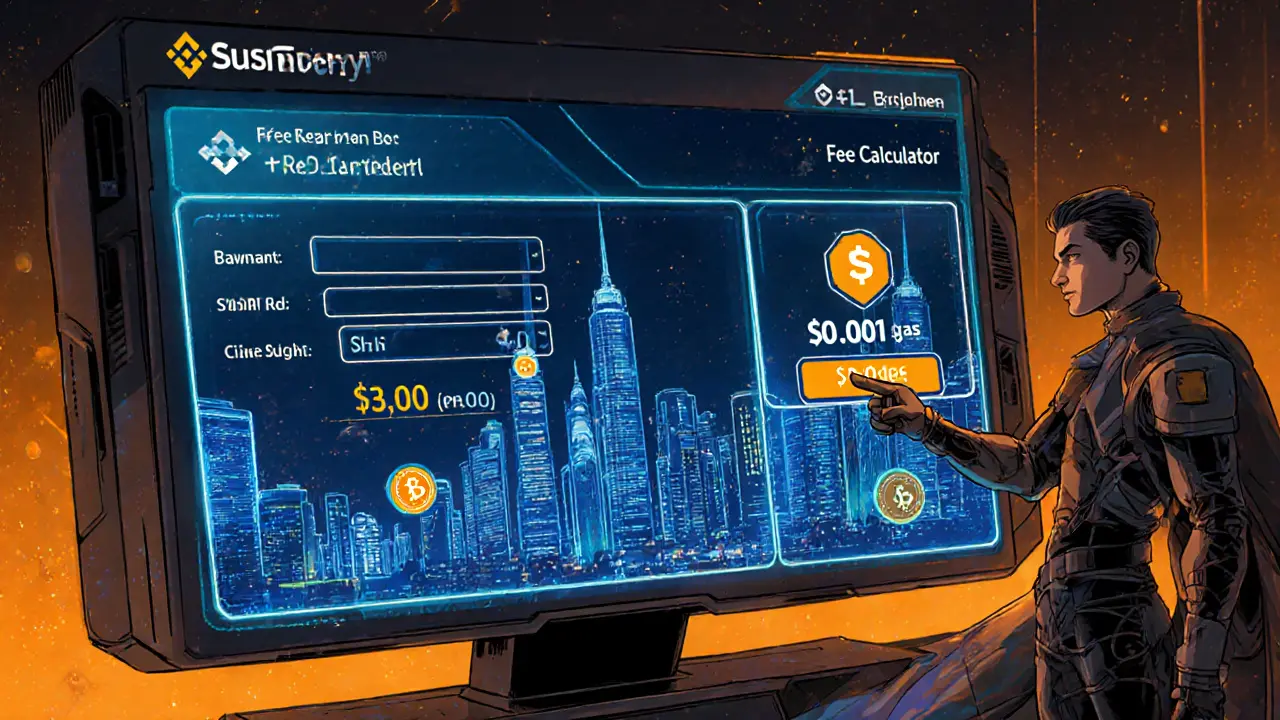SushiSwap BSC Review: Fees, Liquidity & Yield Farming Explained
A detailed SushiSwap BSC review covering fees, liquidity depth, yield farming, governance, security, and a step‑by‑step guide for new users.
Continue ReadingWhen diving into SushiSwap BSC review, a detailed analysis of the SushiSwap decentralized exchange on the Binance Smart Chain, covering its fees, security, and token swap mechanics. It’s also known as SushiSwap on BSC, and it helps traders decide whether this AMM fits their strategy.
The platform runs on Binance Smart Chain, a high‑throughput, low‑cost blockchain that supports Ethereum‑compatible smart contracts. Because BSC offers sub‑one‑cent transaction fees, SushiSwap can attract liquidity providers who want higher yields without burning cash on gas. This directly influences the amount of Liquidity Pools, smart contract vaults where users lock tokens to enable swaps and earn fees. More pools mean tighter spreads, which improves the overall user experience on the DEX.
As a Decentralized Exchange, SushiSwap lets anyone trade directly from their wallet without a central order book, it inherits the trust‑less nature of blockchain while introducing features like SushiSwap BSC review. The DEX leverages an Automated Market Maker (AMM) model, meaning prices are set algorithmically based on pool balances rather than matching bids and asks. This design simplifies trading but also requires users to understand concepts like impermanent loss and slippage.
First, fee structure matters. SushiSwap on BSC charges a 0.3% swap fee, of which 0.25% goes to liquidity providers and 0.05% is retained for the protocol. Compared to Ethereum‑based versions, the lower gas costs on BSC mean that even small trades stay profitable for LPs. Second, security audits play a big role. The core contracts have been reviewed by multiple firms, yet the ecosystem still faces typical DeFi risks like smart‑contract bugs and potential rug pulls from newer token pairs.
Yield farming opportunities add another layer of attraction. By staking LP tokens in SushiSwap’s “Onsen” program, users can earn additional SUSHI rewards on top of swap fees. This incentive aligns with the broader BSC trend of high‑APY farms, but it also amplifies the need for due diligence—farm reward rates can be volatile, and token price swings affect real returns.
Interoperability is another piece of the puzzle. SushiSwap supports cross‑chain bridges, allowing assets from Ethereum, Polygon, and Avalanche to flow into BSC pools. This expands the available token list and deepens liquidity, which in turn improves price discovery for traders. However, each bridge adds its own set of trust assumptions, so users should factor bridge security into their risk assessment.
Finally, community governance shapes the future of the platform. SUSHI token holders can vote on proposals ranging from fee adjustments to new feature rollouts. Active participation often leads to faster implementation of user‑requested upgrades, keeping the DEX competitive against rivals like PancakeSwap.
All these elements—chain choice, fee model, liquidity depth, farming incentives, cross‑chain bridges, and governance—create a web of relationships that define the SushiSwap experience on BSC. Below you’ll find a curated set of articles that break each part down, from tokenomics deep dives to step‑by‑step guides on claiming airdrops and navigating regulatory news. Dive in to get the practical insights you need to trade, provide liquidity, or simply stay informed about the latest shifts in the SushiSwap ecosystem.

A detailed SushiSwap BSC review covering fees, liquidity depth, yield farming, governance, security, and a step‑by‑step guide for new users.
Continue Reading